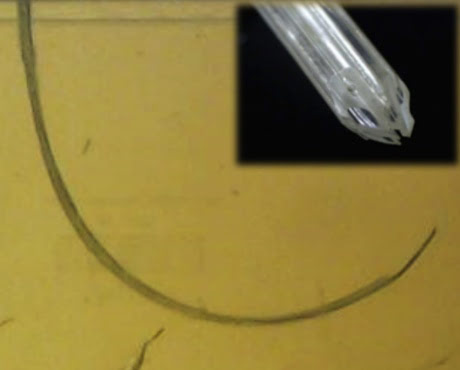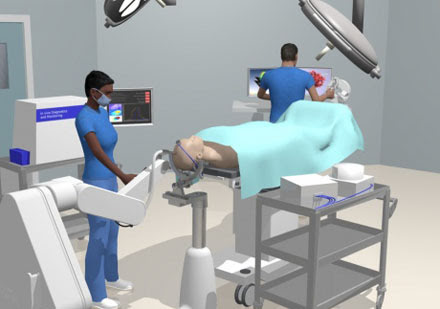A robotic surgical system inspired by the anatomy of wood-boring wasps could be used in Raman spectroscopy to detect cancerous and diseased tissue.

The wasp-inspired robotic needle is bendable, enabling it to access hard-to-reach areas deep in tissue. Courtesy of Imperial College London.
The prototype needle design is based on female parasitoid wasps, which use a bendable needle-like ovipositor to bore into wood to lay eggs in hiding host larvae. The technology consists of a minimum of three tiny interlocked polymer shafts, which slide alongside one another, mimicking the way the ovipositor works. The segments move in a complex pattern to minimize the needle's impact on surrounding tissue, enabling it to travel along curved paths with dexterity and access hard-to-reach areas deep in tissue.
The robotic system is initially being designed by researchers at Imperial College London to deliver medications to tumors in the brain that don’t currently respond well to conventional treatments. However, the researchers believe that the system could also be applied to a range of medical procedures, such as brachytherapy, where radioactive ‘seeds’ can be delivered via the needle to cancerous tumors; laser ablation, where an optical fiber is used to direct a laser to burn away cancerous tissue; and deep brain stimulation, where the needle could contain an electrode for treating certain tremor related disorders such as Parkinson’s disease.
Raman spectroscopy applications would allow analysis of the body at the molecular level, the researchers said.
Six years into the project, the team has now received an €8.3 million (about $9.3 million) grant from the European Union to lead a four-year project to develop precommercial technology for robotic tools to be used for drug delivery in neurosurgery applications.

Illustration of how a surgical procedure will look using the robotic needle. Courtesy of Imperial College London.
The robotic needle will be mounted on a robotic arm, the researchers said, enabling it to be accurately positioned over the patient’s head. The system will intelligently guides the insertion of the needle alongside the surgeon, who will have control via a haptic joystick, which will provide sensory cues, to ensure the insertion is on target.
Clinical trials are slated to begin at the end of 2020.